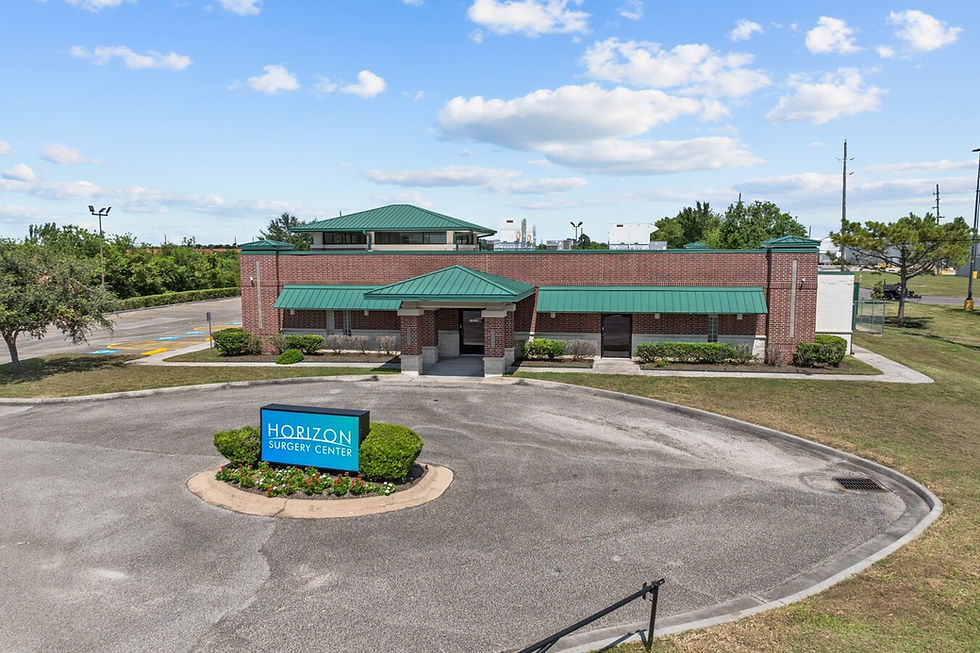Stuck on the Shelf: Why Medical Office Real Estate in Texas is Slowing Down
- Connor Watson

- Aug 6
- 3 min read
In commercial real estate, a building that sits on the market for months without movement sends a clear signal: something is off. Across Texas, inventory is growing stale, and sales velocity has plunged.
According to a recent report by GlobeSt, medical office building (MOB) sales totaled just $1.52 billion in Q2 2025 — the lowest quarterly total in more than nine years. This slowdown comes despite strong fundamentals: occupancies are near record highs and asking rents are holding steady around $25.80/SF (NNN). So what gives?
The answer is a growing disconnect between what sellers want and what buyers are willing to pay. And in Texas, this mismatch is showing up clearly in the form of stale inventory.
Texas: A Market Full of "Stuck" Listings
Recent housing and CRE data from sources like Redfin and Realtor.com reveal that Texas leads the nation in stale listings. In June 2024, more than 70% of listings in Austin and San Antonio had been on the market for 30 days or more. While this data is focused on residential, the same market mechanics apply to commercial real estate: overpriced assets stay on the shelf.
In the medical office segment, that shelf is getting crowded. Sellers remain anchored to 2021-2022 valuations, while rising cap rates and interest costs are driving buyers to demand discounts. As a result, we’re seeing medical office buildings linger on the market in every major metro across the state.
Four Metros, One Pattern
We evaluated inventory age across Austin, Dallas-Fort Worth, Houston, and San Antonio. The average across Texas for properties listed within the last 6 months is only 42%. Here's how each market compares:
Austin: With only 28% of medical office listings added in the last 6 months, the capital city has the tightest market for new inventory.
DFW: 43% of listings have come to market in the last 6 months, slightly above the Texas average. New supply is high, particularly in suburban markets.
Houston: Leading among Texas metros with 48% of inventory listed in the last 6 months. While fresher listings are entering the market, sales velocity still remains low.
San Antonio: Closely aligned with the state average, 41% of listings are new within the last 6 months. Although a smaller and more stable market, San Antonio still shows signs of price resistance. Several listings have remained active beyond the 6-month mark, signaling a similar bid-ask gap.
Across all markets, the story is the same: properties are getting stuck, not because demand has dried up, but because pricing has not adapted to the new investment climate.
A Market Caught Between Fundamentals and Financing
What makes the slowdown in medical office especially striking is that the occupancy and rent growth fundamentals remain healthy. But as interest rates have remained elevated and financing conditions tightened, the cost of capital and construction has changed dramatically.
Investors are expecting higher returns to justify acquisitions. That means cap rates must go up. But if asking prices don’t adjust accordingly, deal volume dries up. That’s exactly what we’re seeing.
Meanwhile, lenders have become more selective. With tighter underwriting standards, fewer deals are getting across the finish line.
Stale Inventory Is a Strategic Problem
When a property sits unsold or unleased for too long, it creates drag on the market. Brokers, landlords, and investors all start second-guessing value assumptions. For tenants, stale inventory may offer opportunities to negotiate more favorable terms. For sellers, it may be time to rethink positioning.
From Stagnation to Opportunity
The Texas medical office market isn’t broken — it’s misaligned. Demand remains solid. Fundamentals are healthy. But without a pricing reset, the logjam will continue.
Q2’25 reminded us that even the most stable asset classes can falter if sellers don’t adjust to a new environment. Medical office buildings aren’t immune to market inertia. They can get stuck on the shelf.
The next quarter will be critical. Will sellers blink? Will cap rates rise further? Or will some portfolios be repositioned to finally clear the pipeline?
Whatever happens next, one thing is clear: stale inventory is both a signal and an opportunity.
For those who pay attention, it’s also a strategy. With so much overpriced inventory on the market, new - appropriately priced - listings get a ton of attention.
We are Here to Help
If you are considering selling, let's gameplan a sound strategy to meet the market where it's at. If you are in a holding pattern, let's analyze your portfolio to see if there is anything you can be doing in the off season to maximize exit value when the time is right.







Comments